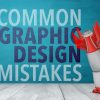1. We don’t peruse, we check
The purpose behind that is — we are on a mission, and we search for what intrigues us. For instance, I once in a while recall myself experiencing all the content on the landing page of an item site. Why? Since the greater part of the web clients are endeavoring to complete something, and done rapidly. We don’t have room schedule-wise to peruse more than should be expected. Regardless we put a ton of content since we think individuals need to realize that. Or then again as certain architects state: “it adds to the experience”.
Use a lot of headings — they disclose to you what each segment is about or on the off chance that they are pertinent to the individual. In any case, they help you choose to examine further or leave the site
Keep sections short — long passages makes it harder for perusers to keep their place, and they are more diligently to check than a progression of short passages. There’s dependably a sensible spot in a passages to break it in two.
Use bulleted lists — almost anything can be a shot rundown. Do you have a sentence that isolates numerous things with comma? At that point it very well may be a shot rundown. Additionally, remember to leave space between slug list lines for ideal perusing. Accept Medium for instance.
Feature key terms — much of page examining process comprises of searching for catchphrases and expressions. Arranging the most significant one in strong, makes them simpler to discover. Likewise, don’t feature an excessive number of things since it will lose adequacy.
2. Make successful visual orders
Another significant angle that will help filtering a page is putting forth an appropriate visual chain of command. We need to clarify that the appearance on a page depicts the connection between components. So there are a few standards for that:
The more significant something is, the more unmistakable it is. The most significant stuff are either bigger or bolder in particular shading set.
Things that are connected intelligently, are connected outwardly. For instance things are comparative by gathering them under the equivalent visual style, or under a similar heading.
3. Try not to reevaluate the wheel
We trust that individuals need something new and that’s only the tip of the iceberg. In any case, we overlook that there are such a large number of utilizations available that every interest our time. Every one of them has various communications, and we have to get familiar with every single one of them. What’s more, our mind explodes when: “Goodness man, another application to learn?!”.
It is a significant point to know before I am going to state this:
We as architects, when requested to structure something new, have a compulsion to attempt and reexamine the wheel. Since accomplishing something like every other person appears to be some way or another off-base. We have been employed to accomplish something other than what’s expected. Also that the business infrequently offers grants and acclaims for planning something that has “the best utilization of shows”.
4. Item guidelines must bite the dust
Our main responsibility is to make stuff unmistakable and self-evident. In the event that conspicuous isn’t a choice, at that point in any event obvious. The primary concern you have to think about directions is that no one is going to peruse them. We should go for evacuating the guidelines to make everything obvious. Be that as it may, when they are fundamental, cut however much as could reasonably be expected. (however, no one is going to peruse them). We wade through.
5. We couldn’t care less how your item functions
For the majority of the general population, it isn’t fundamental to know or see how your item functions. Not on the grounds that they are not astute, yet just in light of the fact that they couldn’t care less. So once they nail down the utilization of your item, they will seldom change to something different.
We should take for instance the Apple AirPods. We would all be able to concede that they are the most exceedingly awful sounding earbuds at the cost you pay. Be that as it may, when I see how individuals communicate with it, I comprehend the genuine motivation behind why they get it. They don’t make you consider why it isn’t working. You even don’t see they have new innovation.
I take a gander at how my mother interfaces with them, and she never asked me what innovation is behind or how they work. She realizes that at whatever point you open the case close to your gadget, it will interface. It is that simple.
6. Individuals don’t search for “unpretentious cues” — we are in a rush
My preferred one. We, fashioners, love giving the clients unobtrusive impacts and include excellent pleasures. Isn’t that so? All things considered, imagine a scenario in which I revealed to you that your clients couldn’t care less about it. Regardless of the amount they disclose to you they do, they don’t. First time? Truly. Second? Alright. Third? Extremely, what amount do I need to see this until it’s sufficient?
For what reason is this event? Life is a considerably more distressing and requesting condition than an application’s pleasures and unpretentious impacts. For instance, you are a dad, and your child is shouting since he needs dessert, the puppy is yapping on the grounds that someone is calling at the front entryway and you are attempting to book a speedy train ticket that should leave in 40 minutes. In that particular minute, individuals won’t give a f* about your inconspicuous prompts. On the opposite side, we should utilize them, yet not when it executes the client stream.
7. Center gatherings are not ease of use tests
Center gathering is a little gathering of individuals that lounge around at the table and talk about things. They talk about their sentiments about the item, past encounters, their emotions and responses to new ideas. Center gatherings are incredible for figuring out what your group of onlookers needs.
An ease of use test is tied in with watching one individual at any given moment attempting to utilize something (your item for this situation). For this situation, you request that they perform explicit activities to check whether you have to fix something in your ideas. So center gatherings is tied in with tuning in and ease of use tests are tied in with viewing.
8. We permit individual emotions to assume control over the procedure
We all who plan computerized items have the minute when they say — ”I am a client as well, so I realize what is fortunate or unfortunate.” And therefore, we will in general have solid sentiments about what we like and don’t.
We appreciate utilizing items with ______, or we feel that _____ is a major agony. What’s more, when we deal with a group it will in general be difficult to abandon those emotions. The outcome is a room brimming with individuals with solid individual sentiments on the stuff to plan an incredible item. We will in general believe that the majority of the clients resemble us.
9. You pose the wrong inquiries
It isn’t beneficial and won’t include any esteem in the event that you pose inquiries, for example, “Do individuals like drop-down menus?”. The correct inquiry to pose is: “Does this drop-down menu, with these words, in this unique situation, on this page make a decent encounter for individuals who are probably going to utilize the site?”
We should leave aside “do individuals like it?” and get further into the key setting of plan.
The purpose behind that is on the off chance that we center around what individuals like, we will lose center and vitality. Ease of use testing will eradicate any “preferences” and demonstrate to you what should be finished.
10. At the point when an individual uses your item, you overlook that she shouldn’t invest energy pondering…
- Where am I?
- Where would it be a good idea for me to start?
- Where the f* did they put _____ ?
- What are the most significant things on this page?
- For what reason did they consider it that way?
- Is that an advertisement or part of the site?
The fact of the matter is that each inquiry that flies into our head, when utilizing your item, just means the subjective remaining task at hand. It occupies our consideration from “why I am here” and “what I have to do”. What’s more, generally speaking, individuals abhor fathoming baffles when they simply need to know whether that catch is interactive or not.
Furthermore, every time you make a client tap on something that does not work, or it would appear that a catch/interface however it’s not, it additionally signifies the heap of inquiries. What’s more, this happens in light of the fact that who assembled the item did not think a lot about the item.





